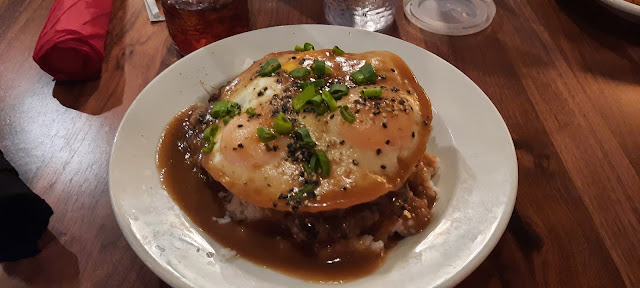I’ve long been a fan of British comedy. As a kid, I would stay up late and watch Fractured Flickers and a couple of other oddball comedy shows. But the king of late, late night was Benny Hill. Maybe it was just the scantily clad women, chasing or being chased by Hill, but I found the skits really funny.
Later I became a fan of Monty Python’s Flying Circus. I still chuckle at the fuzzy little rabbit that turns out to be a fearsome beast that rips men apart (if you haven’t seen it, here is a link https://www.youtube.com/watch?v=TnOdAT6H94s&t=3s).
 |
| Vikings enjoying a little Spam at breakfast |
But one of the most lasting skits from the show involves
Vikings, breakfast, and Spam (https://www.youtube.com/watch?v=Gxtsa-OvQLA).
Now, in my younger years, I vaguely remember having Spam for
breakfast once. I became more familiar with the processed meat product when I
was stationed in Hawaii in the 1980’s, but I didn’t eat a lot of it.
Intrigued, I began to look into the origins of this “mystery
meat.”
It’s really not much of a mystery. Introduced in July 1937, the
Hormel company found a way to use pork shoulder, which was not a popular cut of
meat. They blended it with some ham and a few other ingredients (salt, water, modified
potato starch, sugar, and sodium nitrate), sealed it in a can and cooked it for
about three hours to kill off any bacteria that would make the meat spoil.
During World War II, the US Military became the major
purchaser of the luncheon meat. Spam was shipped to the Pacific and to the front
lines in Europe. With fresh meat being quite scarce, it filled a need for an
Army on the move.
Soldier’s and Marines shared their Spam with local
populations, many who faced near starvation, and Spam became a part of the
local diet. It’s still somewhat popular in the UK, but the pink loaf has found
a real home in the Pacific.
Hawaii, Guam, Okinawa and the Philippines, all consume large
amounts of spam each year.
But South Korea has taken their love of spam to another level.
In the US Mainland, you’ll find the blue cans of meat in
almost every grocery store. Neatly stacked on store shelves, most American’s just
walk past.
In South Korea, Spam has achieved a status of a luxury gift during
the Lunar New Year and annual harvest festivals. Packaged in fancy gift boxes,
many Koreans plop down as much as $75 for a package containing as many as 16
cans and some expensive cooking oils.
Here in the US, Hawaii is the state that consumes more Spam
than any other.
So, I wasn’t too surprised when stopping into a McDonalds on the North Shore, I found Spam and rice on the breakfast menu.
I grabbed a couple of breakfast sandwiches for the family, and
a plate with eggs, Spam, sausage, and rice for myself.
I must admit, it was a great breakfast.





